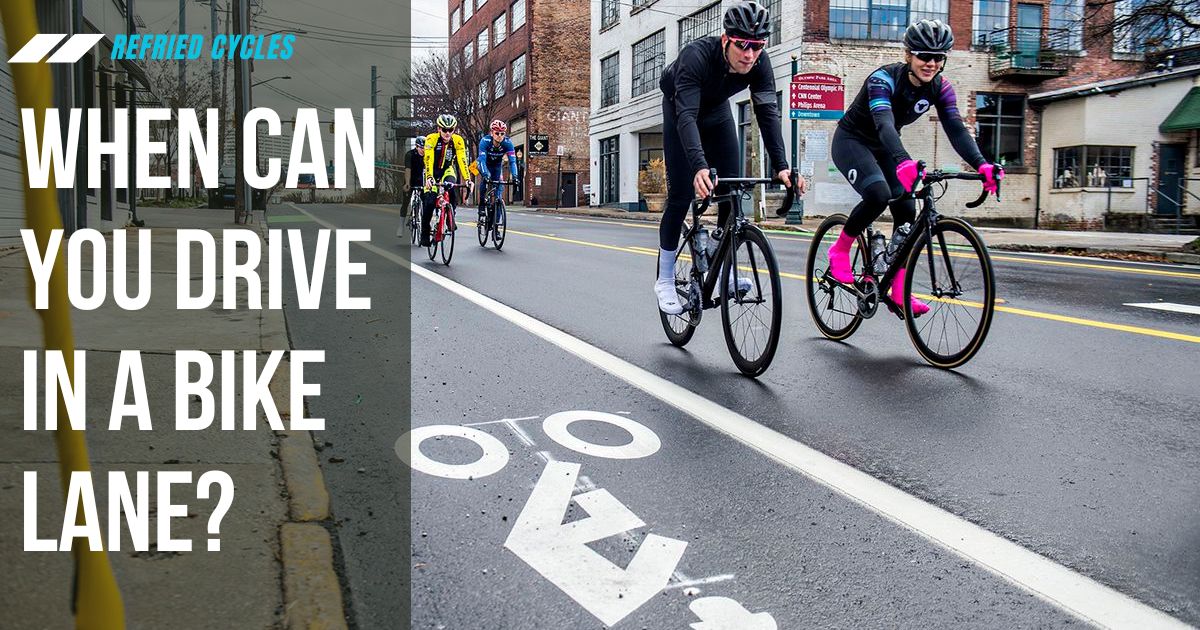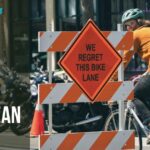Bike lanes exist to provide a safe space for cyclists, separate from vehicular traffic. Generally, with few exceptions, operating a motor vehicle in these designated lanes is illegal. But there are some specific situations where drivers may legally drive in a bike lane – usually for safe navigation purposes like making a right turn at an intersection. However, usage allowances are precisely defined and violating them can result in fines. Across different states and local jurisdictions there are small differences, but driving in bike lanes outside specified exceptions is typically prohibited. This article explores when vehicular use is acceptable versus illegal. We’ll cover relevant laws, safe navigation allowances, intersection rules, and more to analyze the specifics of when you can and cannot drive in a designated bike lane.
What is a Bicycle Lane?
A bicycle lane, sometimes called a bike lane, is a designated part of a road marked off specifically for bicycle travel. It provides cyclists a separate space with visible dividing lines from vehicular traffic.
Purpose The purpose of having demarcated bike lanes on roads is to:
- Improve safety for cyclists by creating clear divisions from cars, trucks and other motor vehicles
- Encourage more bicycle ridership in general by providing visibly defined spaces signaling that roads are meant to be shared with bikes
- Allow for more predictable interaction and traffic flow between cyclists and drivers
Location & Markings Bicycle lanes are typically located on the far right side of a roadway. They use pavement markings including lines, arrows, bike symbols, and signs to visually separate the bike space. White lines provide the core dividing boundary on the lane’s left side separating cyclist and vehicular traffic flows.
Some bicycle lanes called contra-flow lanes may also be located on the left side of one-way streets. This safely allows cyclists to travel in both directions even when vehicles are only permitted one way.
Overall, the intent is to use visible markings, signage, and intersection modifications to call attention to the exclusive or preferential lanes for cyclists along a road. This helps organize road sharing and guides all types of traffic to behave predictably.
When Can You Drive in a Bike Lane?
The key principle governing vehicles entering bicycle lanes is that bike lanes are first and foremost reserved spaces for cyclists. Motorists can only drive in them when making certain necessary maneuvers with proper precautions.
Making Turns
One primary permitted use is for making legal turns across bike lanes at intersections. Drivers can occupy a bike lane up to 200 feet prior to making a legal right or left turn. This provides space to decelerate and properly position the vehicle. However, motorists must yield right-of-way during this process to any cyclists present in the bicycle lane. Bike lanes should also not be entered prematurely in a manner that surprises cyclists.
Passing Obstructions
If conditions like a crashed vehicle, fallen debris, or illegally parked car are fully blocking a regular driving lane, motorists can utilize an adjacent bicycle lane temporarily to pass the obstruction. But this requires first slowing substantially to verify the bike lane is completely clear of cyclists over a sufficient distance before proceeding. And the bicycle lane should be exited again immediately after passing the hazard.
Accessing Parking
Motorists are also permitted to make perpendicular crossings of a bicycle lane exclusively for accessing legal street side parking spots or private driveways and parking lots adjoining the road. When crossing for such purposes, drivers must come to a complete stop beforehand and can only enter the bicycle lane for the minimum distance super important to reach their intended parking destination.
Emergency Vehicles
Emergency services vehicles such as ambulances, fire trucks and police cars responding to emergency calls can utilize bicycle lanes. But they should do so only when necessary and while exercising extreme caution by travelling at very low speeds. These vehicles must be prepared to slow or stop instantly for any cyclists.
Strictly Prohibited Uses
There are also important restrictions on what motor vehicles cannot use bicycle lanes for under any circumstances:
- Driving extended distances in bike lanes to bypass traffic. Vehicular travel directly along bicycle lanes is never permitted.
- Double parking across bicycle lanes or stopping in them for any reason. This causes dangerous blockages.
- Parking inside bicycle lanes or near them without leaving at least 3 feet of clearance.
Vehicle usage of bike lanes should be rare, done at low speeds, and only permitted to the minimum extent necessary for safe turning and navigating hazards and obstructions. Drivers must always yield to cyclists and exit bicycle lanes promptly.
What Are The Benefits Of Bike Lanes?
Bike lanes offer various advantages that make roads safer while encouraging environmentally friendly transportation. Some major benefits include:
Reduced Accidents
Having clearly delineated spaces for both cyclists and motorists significantly decreases the risk of collisions and hazardous situations. It minimizes confusing interactions and creates order through organized traffic flows. Studies show properly implemented bike lanes reduce accidents for all road users by over 50%.
Pedestrian Safety
With bicyclists traveling in their own protected lanes instead of sidewalks, pedestrians have dedicated space to walk, jog, or run safely. This prevents fast-moving cyclist and pedestrian traffic from dangerously intermingling.
Healthier Transport & Lifestyles
Bike lanes enable more people to take up cycling by providing visible, safer infrastructure. Cycling to work and for errands intrinsically builds physical activity into daily routines. This fosters healthier lifestyles for individuals and environments through reduced emissions.
Approachability of Cycling
Bike lanes are accessibility markers that signal to residents such transportation is viable locally. They reveal respect for multiple transit modalities including bicycles. First-time or tentative urban cyclists are also more encouraged to ride bikes.
Community Livability
Streets with bike lanes tend to calm vehicular traffic by spatially conveying narrower lanes and signaling sharing between modes. This creates more small-scale community vibrancy supporting local businesses.
Overall, bike lanes have a win-win impact. They protect all people using roads by minimizing conflicts. Simultaneously, they open access and visibility for greener transportation too. Bike lanes reveal that bicycling is a practical transport choice embraced publicly through infrastructure support.
Exceptions to Bike Lane Regulations
While bicycle lanes are intended primarily for cyclists, there are a few specific exceptions where motor vehicles may be allowed usage for safe maneuvering needs:
- Making Legal Turns: Motorists can occupy an adjacent bike lane up to 200 feet before an intersection if making a legal turn. However, they must yield to any cyclists in the lane by slowing or stopping as required.
- Passing Hazards: If travel lanes are fully obstructed by something blocking flow like a crashed car or collapsed tree, drivers can utilize bike lanes briefly to carefully pass the hazard after making sure no cyclists are present first.
- Accessing Parking: Motorists may also cross perpendicular to a bike lane exclusively to access legal street side public parking spots or private driveways adjoining the road, coming to a complete stop beforehand.
- Emergency Response: Emergency services vehicles can drive in bike lanes strictly when super important for urgent responses. But this requires extreme care and readiness to stop for cyclists potentially present.
In all cases, vehicular usage should involve necessary maneuvering only without extended travel directly inside bike lanes. And authorization may depend on local regulations too. For example delivery vehicle exemptions may vary by city. But safety demands yielding and extreme care around cyclists always remains paramount.
Bike lanes exist to give cyclists protected road space. Drivers should avoid them outside specific necessary situations: legally turning after yielding, overcoming obstructions by first making sure the lane is clear, and exclusively perpendicular crossings to access parking. In such sparse permitted cases, vehicles can occupy bike lanes cautiously and briefly but must constantly yield to cyclists. Any extended travel in or blocking of designated bicycle lanes remains illegal. On Refried Cycles, we explore all aspects of safe, considerate cycling and road sharing between modes of transit.









